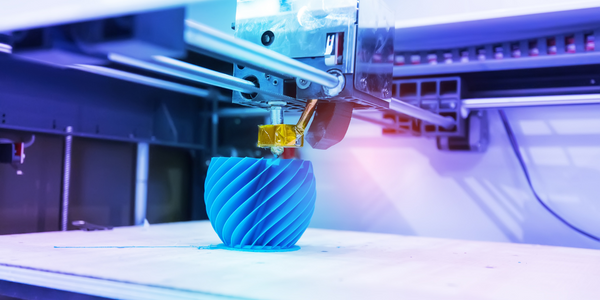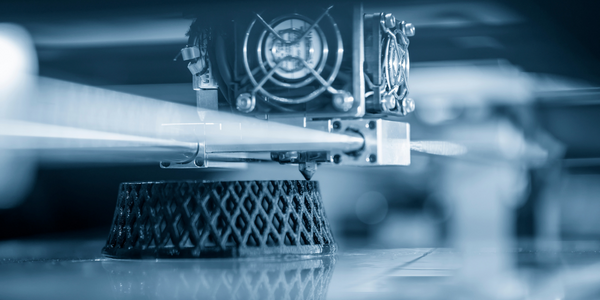Additive Manufacturing

- Automotive
- Transportation
- Product Development
The additive manufacturing and rapid prototyping industry are expected to reach over USD 20 billion by 2020.
Source: Capstone Headwaters
The overall 3D printing market is expected to grow from USD 9.9 billion in 2018 to USD 34.8 billion by 2024, at a CAGR of 23.25%.
Source: Markets & Markets
IDTechEx forecasts that the global market for 3D printing equipment, materials, software, and services is estimated to be worth USD 22 billion by the year 2028.
Source: IDTechEX
PR Newswire forecasts the global metal additive manufacturing market to grow at a CAGR of 21.36% during the period 2018-2022.
Source: PR Newswire
What is the main business value of additive manufacturing (AM)?
The radically different production process enables the production of highly customized items on demand. Benefits include:
1. Mass Customization: With 3D printing, it is possible to produce low-volume batches down to a size of one. The economics of producing one product is the same as producing 100 or 1,000. Thus, AM can be applied when customization or small batches are required.
2. Creating complex components: With 3D printing, it is possible to create shapes that can't be made by molding or machining. For example, new classes of physical, bio, and chemical sensors can all be fabricated via 3D printing technology. Companies are also experimenting with printed organs that are built from the cells of the recipient.
3. Greener manufacturing: There are potential environmental benefits for 3D printing, which eliminates the transportation of components (often across thousands of miles). However, we cannot yet compare the environmental impact of traditional mass manufacturing against mass additive manufacturing.
What are the key specifications that additive manufacturing systems are rated?
Key specifications include quality of the end product, production rates (cycle time), dimensional precision, color merging & range, and the number of scraps.
What data is required to enable additive manufacturing?
The design must be transmitted through CAD software to the printer. There is a wide range of professional grade and free software available for both the design and transmission of data.
A growing number of software products enable design in collaboration with machine learning algorithms. These algorithms generate, test, and iterate thousands of designs to meet performance specifications provided for the end product. When machine learning is deployed, it can often be useful to seed the system with data sets in order to guide the development process.
What challenges constrain the use of additive manufacturing?
Common feasibility challenges include:
1. The high cost of 3D printing equipment: Equipment remains costly and many companies do not have sufficiently high uptime to maximize the value of their equipment.
2. The limited number of materials available and limitations on the ability to use different materials in the same design.
3. Post-processing requirements: In some cases post-processing can be expensive and require additional tooling.
4. The time required to print each component: At this point, the time and cost required to make one part may not be sustainable for a full fabrication project. 3D printing is not a substitute for precision machining centers and machinery that produce high-quality products in a timely manner.
5. Lack of formal standards: The lack of standards constrains the use of design data across different software programs or machines.
6. Lack of expertise and training: Few designers have a comprehensive understanding of both how to design using 3D printing software and the practical considerations that make additive manufacturing before or worse than traditional manufacturing in a specific case.
Case Studies.





